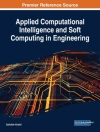This book provides an excellent reference to the MIMO radio
channel
In this book, the authors introduce the concept of the Multiple
Input Multiple Output (MIMO) radio channel, which is an intelligent
communication method based upon using multiple antennas. Moreover,
the authors provide a summary of the current channel modeling
approaches used by industry, academia, and standardisation bodies.
Furthermore, the book is structured to allow the reader to easily
progress through the chapters in order to gain an understanding of
the fundamental and mathematical principles behind MIMO. It also
provides examples (i.e. Kroenecker model, Weicheselberger model,
geometric and deterministic models, and ray tracing), system
scenarios, trade-offs, and visual explanations. The authors explain
and demonstrate the use and application of these models at system
level.
Key Features:
* Provides a summary of the current channel modeling approaches
used by industry, academia and standardisation bodies
* Contains experimental and measurement based results
* Provides a comprehensive down to earth approach with concise
and visual explanations of MIMO Radio Channel
* Covers a variety of system scenarios and explains the
trade-offs involved in each
* Accompanying website containing MATLAB code and solutions to
related problems
href=’http://www.tim.brown76.name/MIMObook’>http://www.tim.brown76.name/MIMObook)
Practical Guide to the MIMO Radio Channel with MATLAB
examples is an invaluable reference for R&D engineers and
professionals in industry requiring familiarisation with the
concept, and engineers entering the field or working in related
fields seeking an introduction to the topic. Postgraduate and
graduate students will also find this book of interest.
Über den Autor
Dr Tim Brown, University of Surrey, Guildford, UK is a
lecturer in mobile communications at the University of Surrey, UK,
where he is conducting research in MIMO as well as teaching courses
and seminars that include introducing MIMO as well as other aspects
of mobile communications.
Dr Persefoni Kyritsi, Aalborg University, Denmark has
worked in wireless communications for Lucent Technologies Bell
Labs, in wireline communications for Deutsche Telekom, Frankfurt,
and in circuit design for Intel Corporation and the Nokia Research
Center, Helsinki- Finland. In 2001 she joined Aalborg University as
an assistant research professor. From September 2003 until August
2005, she was a visiting researcher at the Department of
Mathematics, Stanford University. Since September 2005, she holds
the position of Assistant Professor at the Antennas, Propagation
and Radio Networking Section at Aalborg University
Dr Elisabeth De Carvalho, Aalborg University was a
post-doc at Stanford University, USA in 1999-2001. In 2001-2005,
she worked in 2 start-ups in the USA and France. She also held
short-term positions at Deutsche Telekom, and Lucent Technologies,
Bell Labs, USA. She has worked on several aspects of wireless
communications (GSM, CDMA, OFDM, wireless LANs, IEEE 802.16) and
wireline communications (x DSL). In 2005, she joined Aalborg
University as an Associate Professor. She has managed a project in
collaboration with Samsung Electronics, Korea including 20
researchers and focusing mainly on MIMO and relay
communications.












